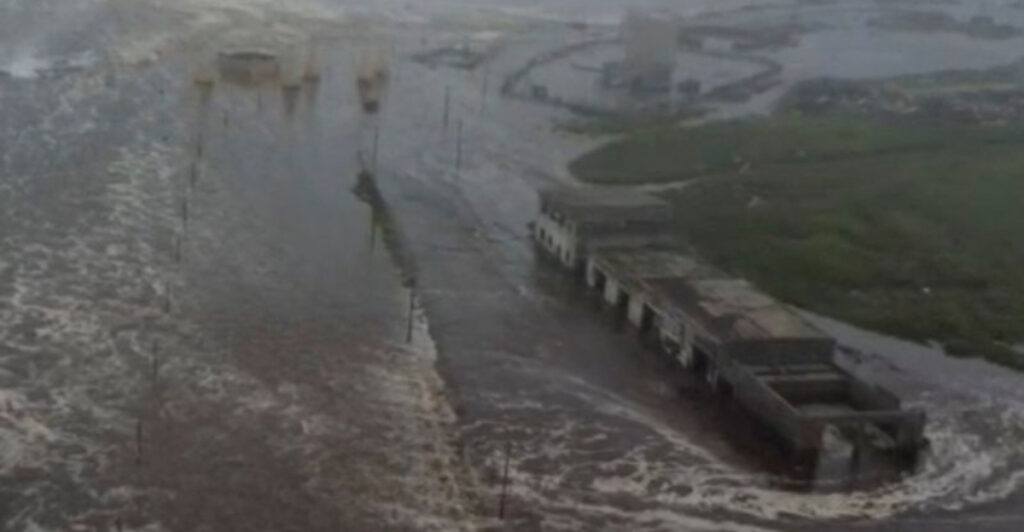An 8.8 magnitude earthquake struck off Russia’s Kamchatka Peninsula on July 29, 2025, triggering widespread tsunami alerts across the Pacific—including an advisory for California’s entire coastline, affecting around 23 million residents and visitors. Here’s what travelers and coastal communities should know.
1. Colossal 8.8‑Magnitude Megathrust Quake Near Kamchatka
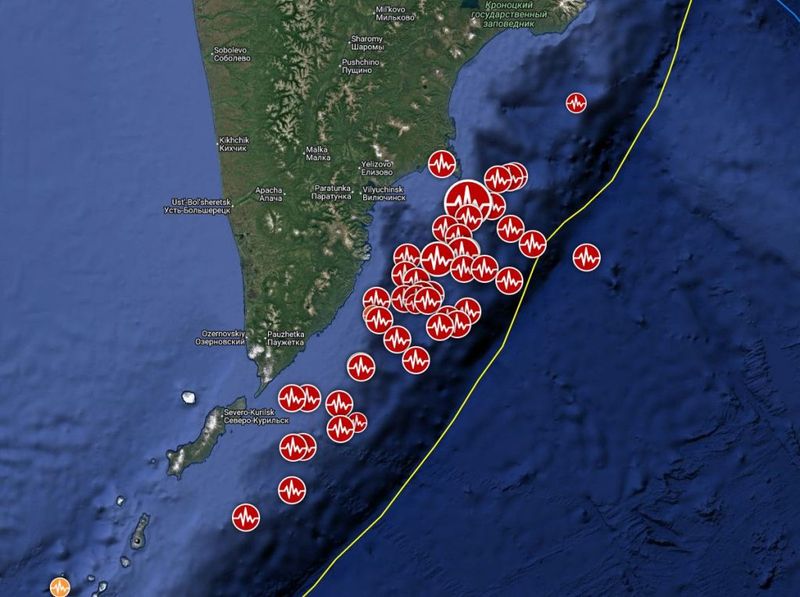
On July 29, at precisely 23:24 UTC, the earth shook beneath the Kamchatka Peninsula with an 8.8 Mw earthquake. This colossal megathrust quake struck approximately 315 miles southwest of Bering Island. The tremor reached depths between 12–20 mi (13 mi or 20 km), unleashing a massive release of energy.
Seismologists were quick to pinpoint the epicenter, providing essential data for subsequent tsunami warnings. Such powerful tremors in this region are a stark reminder of the Pacific’s volatile tectonic activity.
This earthquake’s force was felt far and wide, with repercussions echoing across the Pacific, prompting immediate alerts.
2. Series of Aftershocks, Including a 7.4 Quake Within Minutes
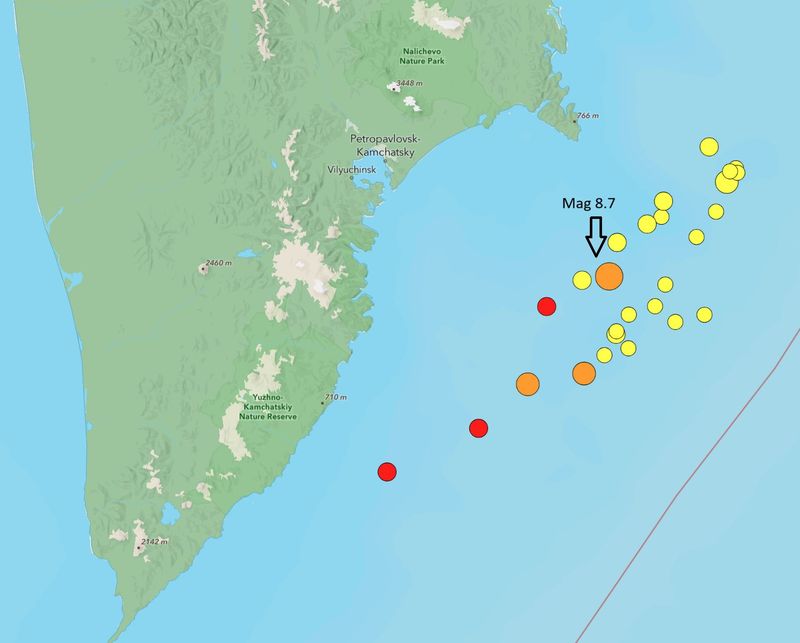
Following the initial devastating quake, a series of aftershocks rattled the region, with a notable 7.4 magnitude tremor striking shortly after. These aftershocks unfurled over the next 30 minutes, centered around 144 km east of Petropavlovsk‑Kamchatsky.
Residents of this city, home to ~180,000 people, experienced the earth quivering beneath them, adding to the chaos. Emergency services were on high alert, ready to respond to any arising needs.
Such aftershocks are typical post-major seismic events, as the earth’s crust adjusts to the new pressures.
This ongoing activity keeps nerves on edge.
3. Tsunami Alerts Issued Across Pacific—Then Gradually Downgraded
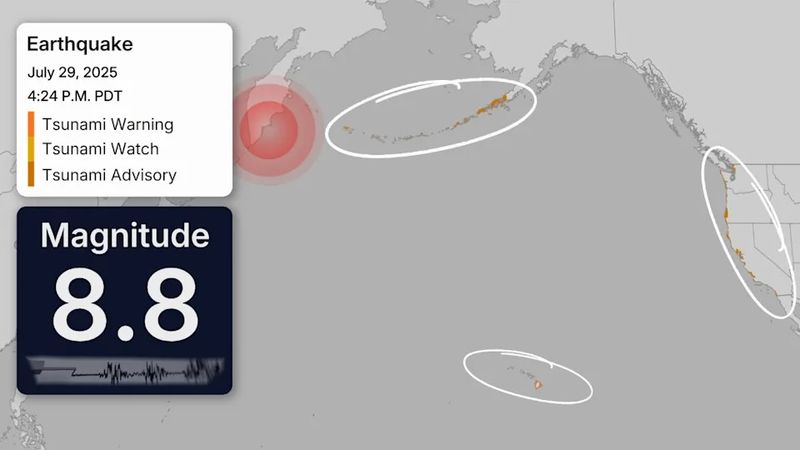
In the immediate aftermath, the Pacific Tsunami Warning Center (PTWC) and Russia’s Emergencies Ministry sounded the alarms. A tsunami warning was swiftly issued for nearby coasts, extending to the U.S. West Coast and Hawaii.
Initial fears suggested a significant threat, prompting widespread alerts. However, as data filtered in, many warnings were gradually downgraded, providing a sigh of relief for many.
The vigilant actions of these agencies demonstrate the critical nature of rapid response in mitigating potential disaster impacts, though challenges remain in predicting exact outcomes.
4. California Coastal Advisory Covered ~23 Million People

From Crescent City to San Diego, nearly 23 million people found themselves under a tsunami advisory. This advisory prompted immediate beach closures and dock restrictions, as public alerts reverberated through communities.
Authorities were quick to emphasize staying inland and away from harbors and marinas, issuing warnings to safeguard lives.
The magnitude of the advisory reflects the vast and interconnected nature of the Pacific, reminding coastal communities of the inherent risks they face, even from distant seismic events.
Preparedness and quick action are essential in these scenarios.
5. Wave Forecasts for California Remained Modest—but Multiple Surges Possible
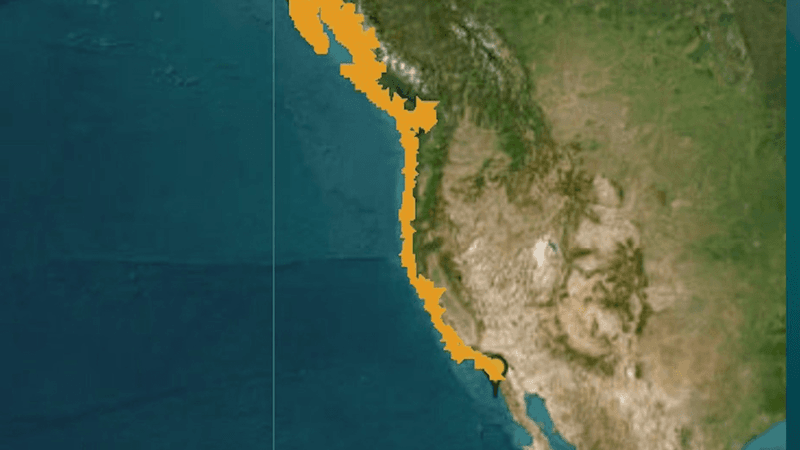
Despite the initial chills of a tsunami advisory, wave forecasts for California remained modest. Early predictions indicated waves under 1 foot. Yet, worst-case models suggested Crescent City could experience surges up to 4.8 ft.
The National Weather Service cautioned that these wave activities could prolong for 10 to 36 hours, highlighting the unpredictable nature of such events.
Multiple surges, each with their own potential impact, kept residents on alert. It’s a vivid reminder that the danger isn’t always immediate, but can unfold over time, requiring vigilance and readiness.
6. Tsunami Waves Arrived—Crescent City Worst Hit
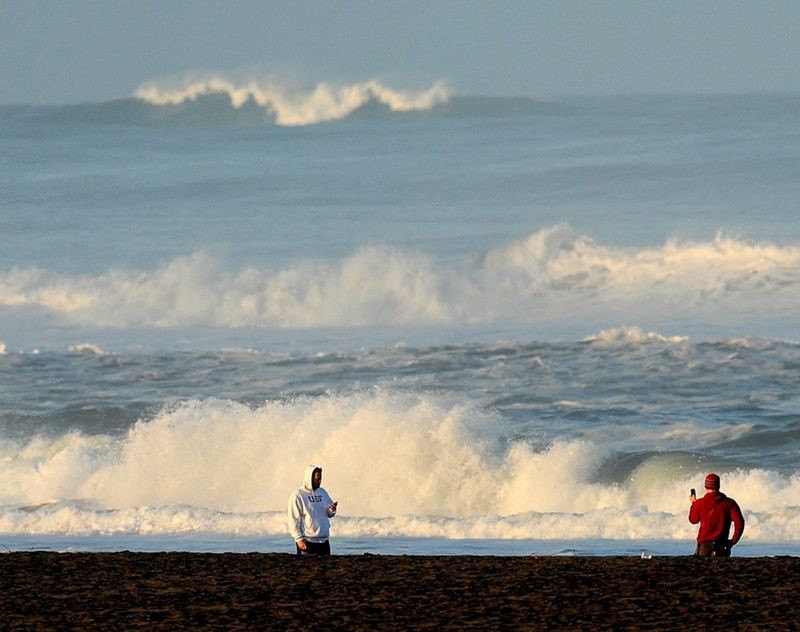
As Tuesday night turned to Wednesday, Northern California’s Crescent City bore the brunt of the tsunami waves, with 3.6 ft (1.1 m) waves recorded. Although San Francisco, Monterey, and Los Angeles registered minor wave activity, Crescent City emerged as the focal point.
Locals witnessed the ocean’s power firsthand, though thankfully, no injuries or major damage were reported.
The relatively modest impact compared to historical events underscores the importance of preparedness and robust warning systems in protecting lives and property during such natural events.
7. No Evacuations—But Sirens and Alerts Warned Residents
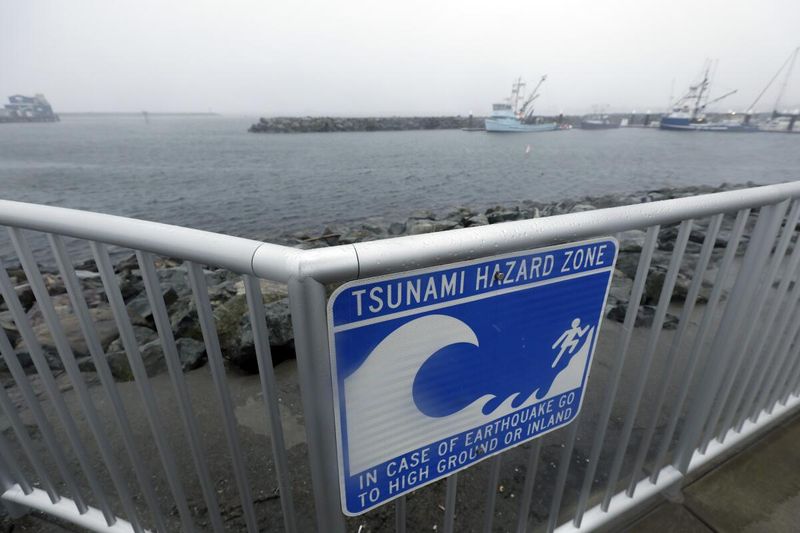
Although no mandatory evacuations were issued, the atmosphere was tense. Coastal communities, like Crescent City, activated their tsunami sirens. These echoed warnings throughout the night, urging residents to remain vigilant and stay clear of coastal areas.
Monterey took additional measures, issuing localized advisories for specific harbors and coves.
The sound of sirens serves as a stark reminder of nature’s unpredictability and the precautions we take in the face of potential danger.
Such proactive measures often determine safety and preparedness levels.
8. Hawaii Experienced Higher Wave Threats
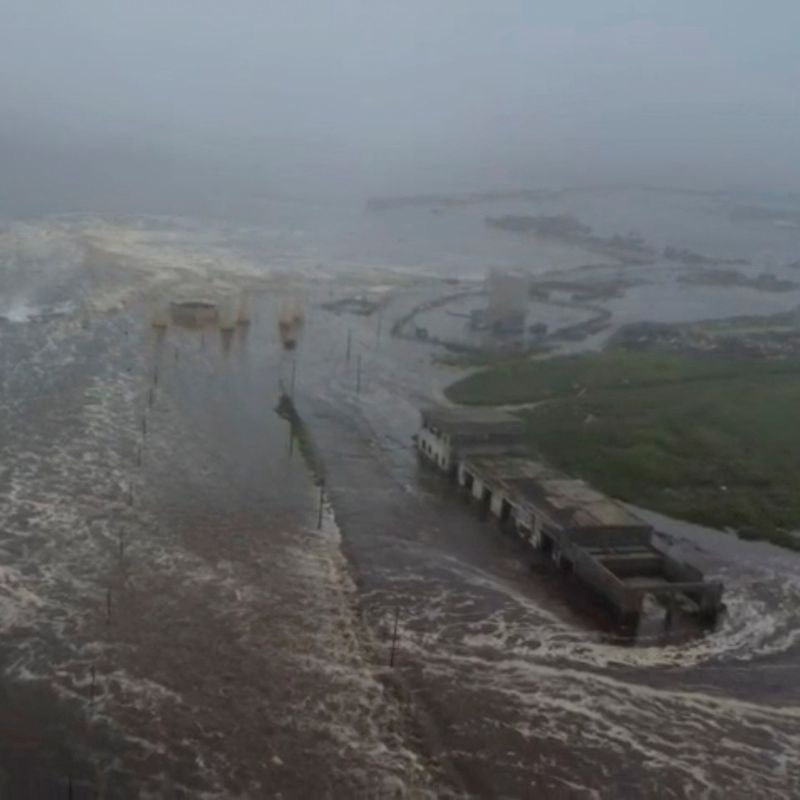
Contrasting with California, Hawaii faced tsunami warnings rather than mere advisories. Waves reaching 6–10 ft heightened the urgency, prompting evacuations in certain regions.
Maui witnessed significant disruptions, including canceled flights and hotel evacuations, as safety took precedence over routine life.
These events serve as a reminder of Hawaii’s vulnerability to Pacific-wide seismic activity. Preparedness efforts and emergency protocols were put to the test, ensuring that residents and visitors alike could navigate the challenges posed by such natural phenomena.
9. Understanding Tsunami Alerts: Warning vs. Advisory vs. Watch
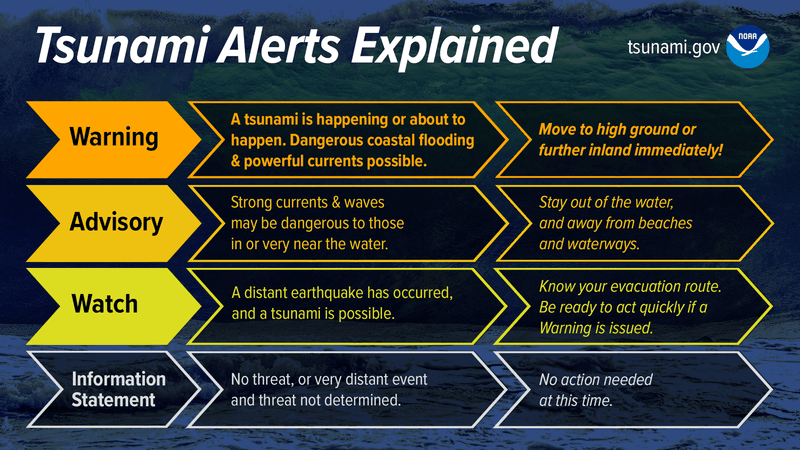
Tsunami alerts come in varying degrees of urgency. A “Tsunami Warning” signals imminent flooding and dangerous waves, requiring immediate evacuation.
A “Tsunami Advisory” indicates the potential for strong currents and hazardous waves, advising against shoreline activities. Meanwhile, a “Tsunami Watch” suggests that a tsunami is possible, urging vigilance and preparedness.
Most U.S. West Coast regions found themselves under advisory, while Hawaii and parts of Alaska faced full warnings. Understanding these differences is crucial for effective response and safety during such events.
10. Travel and Safety Tips for Tourists and Coastal Visitors

For travelers and coastal visitors, safety takes center stage during tsunami alerts. Avoiding beaches, harbors, and marinas becomes essential until official “all-clear” notifications are issued.
Staying inland or at higher elevations is advisable, especially after 10 p.m. when the initial wave is expected.
Downloading emergency alert apps like NOAA Weather App ensures timely updates and safety information. Recognizing prolonged hazardous surges emphasizes that peak flooding might not come with the first wave, but in subsequent ones.
Informed and cautious behavior is key.
11. Alaska and Japan Also Affected
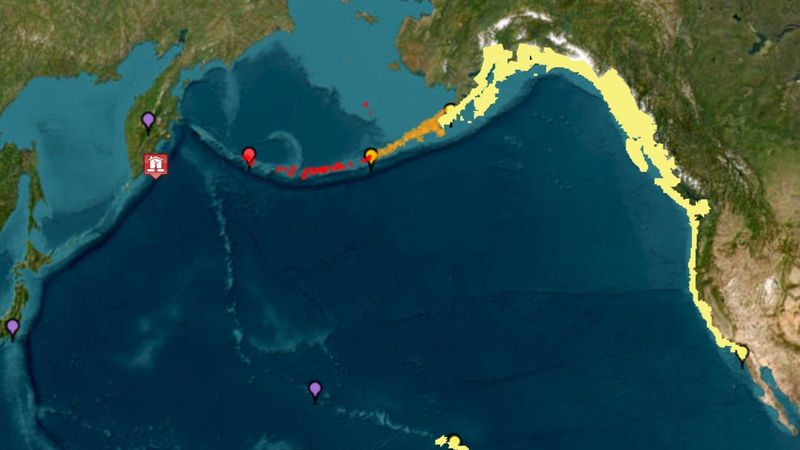
The ripple effects of the quake extended beyond the Pacific. Japan reported tsunami waves up to 60 cm (2 ft) in parts of Hokkaido and Tokyo Bay, prompting safety measures along its coasts.
Alaska’s Aleutian coast also found itself under warnings. While no severe damage was reported, the alerts highlighted the interconnectedness of the Pacific nations in facing seismic threats.
These events serve as a reminder of the swift and far-reaching impact that such natural events can have, prompting coordinated responses across borders.
12. Historical Context—Powerful Tsunamis in the Region
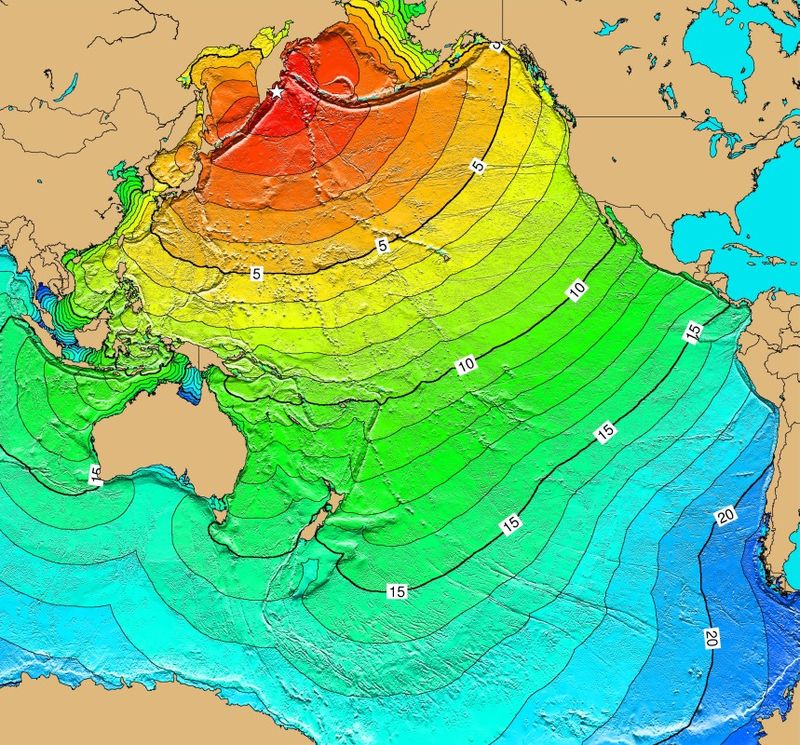
The Kamchatka region is no stranger to powerful tsunamis. In 1952, a magnitude 9.0 quake generated waves up to 30 ft, tragically claiming over 2,300 lives in Severo-Kurilsk.
Similarly, the 2006 Kuril Islands earthquake sent waves of ~2 m to Crescent City, resulting in ~$10 million in port damage.
These historical events highlight the devastating potential of seismic activities and underline the importance of preparedness and rapid response.
Understanding the past is crucial for navigating the future, especially in regions prone to such natural calamities.

